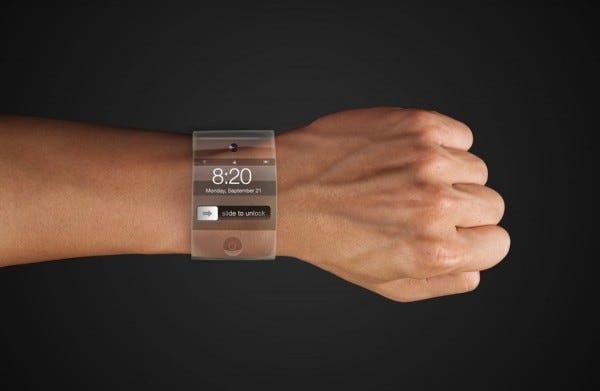Wrist Watching Back in Style?
Click to read the full story: Wrist Watching Back in Style?

Before cellphones, the best way to tell time was to look at our wrists. It was a time when most people strutted around with a wristwatch. The more stylish, more colorful, the better with many professionals hoping to score a Rolex someday. Wrist watches were the status symbol for most men. Diver’s watches were common even if those watches never get immersed in water. Fast-forward in time and now whoever owns the latest iPhone rocks the hardest (admit it). No one camps out in front of malls or watch stores hoping to score the latest from Tag Heuer or Swatch (though Swatch did come quite close). Now, instead of wearing wristwatches, people take to looking at their phones to tell the time, even if it means having to pull their phones out of their pockets or out of the inner recesses of their purses. What is the sense of having two devices that tell time, right? Now tech companies hope to bring the wrist watching era back through wearables dominated by smart watches.
Tech companies are scrambling to come up with their own smart watches. There’s Microsoft, Motorola, Samsung, Sony and Apple. We all know that Apple has just released the Apple Watch. It’s pretty late into the game but we also know how the iPhone turned out. Apple hopes to bring style into the wearables business with its Apple Watch/iPhone 6 tandem. Will the Apple Watch and iPhone 6 succeed in changing our timekeeping habits back to the wrist? Will people once again be chastised for looking at their wrists during boring meetings? Moreover, can Apple once again shift the personal computing paradigm? Perhaps, if it’s cool enough.

Before cellphones, the techiest wristwatches have ever gotten before was the inclusion of a scientific calculator or the ability to play Space Invaders. Higher end watches included altimeters and pressure sensors. Today, conventional wristwatch makers struggle to keep up with the growing number of smart watches. Since the release of the Apple Watch, luxury watch makers have announced that they’re joining the bandwagon. Never before has so many features been crammed into wristwatches. Technology has gotten portable enough to fit a small computer into a 1.5 square inch space. We’ve all had our Dick Tracy, James Bond, Buck Rogers fantasies of communicating with others on our wrists, sensing environment variables and getting various information on watch sized computers where wristwatches should be. We’re getting there but not just yet, there are still a bunch of things to work out. But could what we have now with the Apple Watch and iPhone 6 begin the trend?
The Apple Watch and other smart watches does bring communication to our wrists. Users can either accept calls by tapping accept or dismiss them easily just by dropping their wrists. Users can also read SMS phone messages and messages from various social media apps. Email headers can be routed to smart watches. All notifications from Facebook, Twitter, Instagram will be routed to the smart watch.
How about environment variables? There’s the weather and temperature forecasts. It brings new meaning to when people ask how the weather is. People will just look at their wrists too. There’s also elevation or altitude and of course location through GPS. There’s also news updates. Headlines and breaking news are transmitted to the watch so owners never miss a beat. Speaking of beats, most wearables today include fitness trackers such as a heart rate monitor, blood pressure monitor and pedometer. In this now health conscious world, people could know their blood pressure as well as their heart rate after having a pan of deep dish pizza.

But what does the iPhone 6 have to do with the equation? Most smart watches unfortunately are not independent devices. They work in tandem with smartphones. Most of the processing happens in the smartphone and information gets routed to the smart watch. That in itself is a bit of a deal breaker and as mentioned, we’re still getting there. Most people who bought into the Apple Watch are likely to have an iPhone 6 or at least an iPhone 5 which is the minimum requirement to keep an Apple Watch.
What smart watches like the Apple Watch does bring to the table is the convenience of knowing the time, keeping up with social media, getting the weather, knowing the next appointment, getting the latest news without having to pull out their iPhone 6 or whatever smartphone is coupled with their smart watch every time the phone chimes or vibrates, and later fall into that pit of short browsing sessions. “What do we have here? A tweet from Stacy. Wonder what she’s up to? Lemme check Facebook. Wait, Howard’s thrown a party. Oooh! Photos!” Admit it, one time or another you’ve fallen into that bottomless pit even on busy days.
Smart watches allow us to perform information triage. Not all phone notifications are worthy of our attention. We don’t need to pull it out every time it vibrates. An email from the brass? Check. An Angry Birds update? Later. Help in Clash of Clans? Hmmm. Girlfriend in a bad mood? Panic.
The last example is a unique feature of the Apple Watch. The ability to send our heartbeats to our intimate other and being able to doodle and send our emotions too. How about games? I see match-3s and puzzle games being commonplace and marble maze games for those standing one-handed train rides.
No doubt there’s a lot of benefits to having smart watches like the Apple Watch. It’s still a bit early to tell whether the Apple Watch and the iPhone 6 can shift the personal computing paradigm. Surely there will be at least a profound change. The market continues to grow, for now, let’s sit back and watch.
The post Wrist Watching Back in Style? appeared first on Movie TV Tech Geeks News By: Marius Manuella
